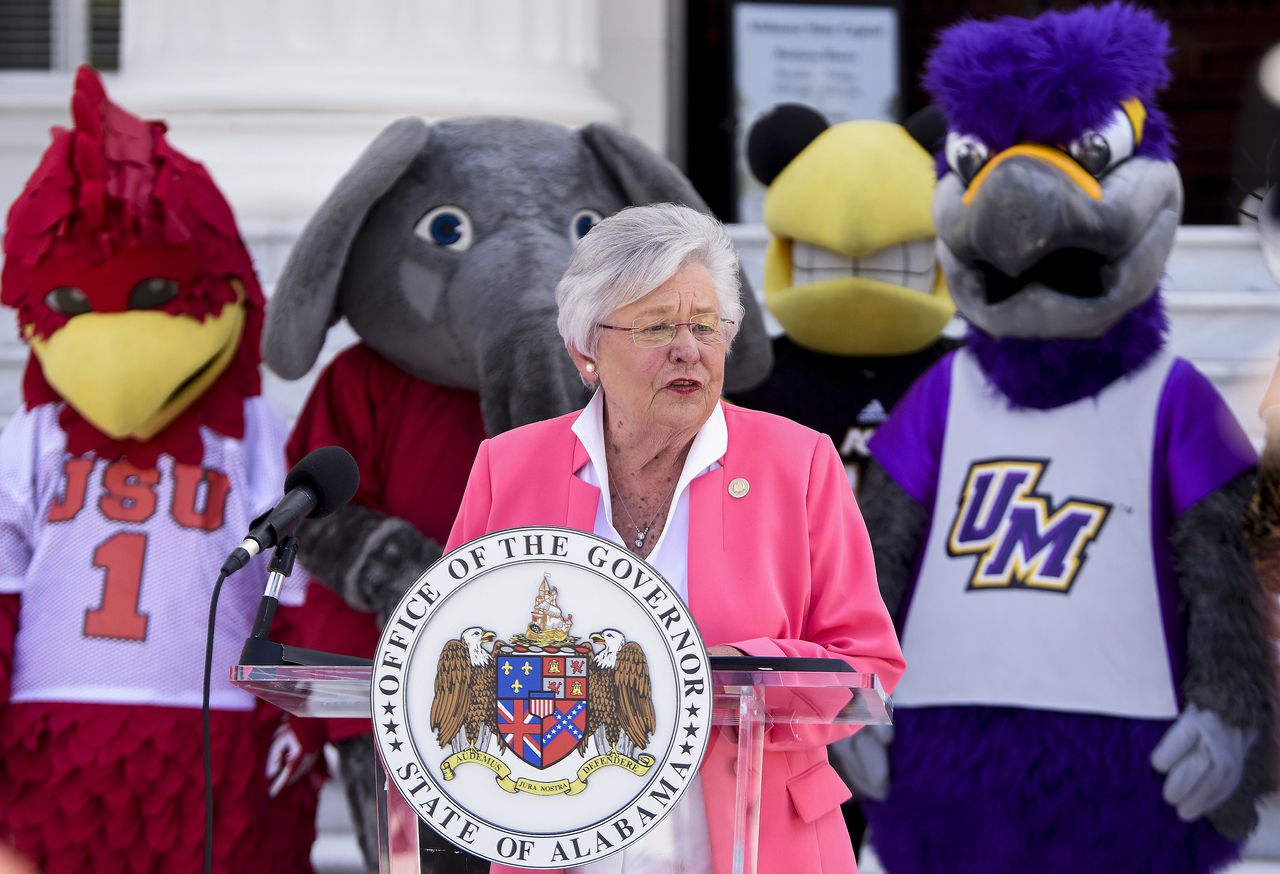Alabamaâs four-year public universities continue enrollment boosts
Is a college education worth the costs, time, and debt at a time when jobs are aplenty?
It’s a question being asked by parents and students nationwide, as four-year universities and smaller colleges struggle to boost enrollment.
Media reports highlight the anguish of student loan debt, and politicians – particularly Republicans – have grown skeptical over the future of a college education. A Wall Street Journal-NORC poll in March showed there was a 20% decline since 2013 in Americans who had faith in the value of a four-year degree.
But given the difficult atmosphere for colleges since the pandemic, Alabama’s institutions seem to be bucking a trend – or at least a general perception that college education is trending downward.
Overall, nationally, higher education enrollments might be stabilizing somewhat after the pandemic, according to the most recent statistics provided last spring by the National Student Clearinghouse Research Center. In spring 2023, there was a national 0.5% year-over-year enrollment loss, compared to a 3.1% drop in the spring 2022 over the prior year.
According to preliminary enrollment data in Alabama, only three of the state’s 14 public, four-year universities experienced a downturn in annual enrollment between 2022-2023. But two of those three schools – the University of Alabama at Birmingham and the University of Alabama at Huntsville – experienced explosive growth over the past decade. Enrollment numbers included both undergraduate and graduate students.
Even universities that have struggled within the past 10 years are having a good start to the 2023-2024 academic year.
- Alabama State University, a historically Black college and university in Montgomery, saw its enrolment go up 3.7% over the past 12 months, according to data from the Alabama Commission on Higher Education (ACHE). Alabama State’s enrollment has dropped by more than one-third over the past decade.
- Alabama A&M, another HBCU, increased its enrollment by 10.8% from 2022 -2023. And over the past decade is has seen a 32.6% jump.
- At the University of Montevallo, enrollment has been dropping steadily for the past decade. But since last fall, enrollment has leapt 13.8%.
A few of the state’s largest universities are also touting record-breaking statistics.
The University of Alabama, in a news release this week, proclaimed its fall 2023 student headcount as a “record-breaker,” and credited a boost of in-state students.
Auburn University, which continues to see enrollment spikes, said it’s too early to comment on the preliminary data.
At the University of South Alabama, officials are touting first-year student enrollment jumping to levels that the Class of 2027 will be “one of the largest” in the institution’s 60-year history. “We decided early on to retell our story,” said USA President Jo Bonner, a former congressman who became the university’s president in 2021. “We’re young enough to do that. We are in our 60th anniversary this year. It took the University of Alabama 141 years to get to our size. Auburn, 101 years.”
Challenging environment
University officials and education researchers say there is no one reason for the increase in Alabama.
One common factor, they say, is an increase in dual enrollment classes offered to high school students. Another factor is with a rise in student aid, according to the ACHE.
Credit is also being given to programs like the Start Right Summer Bridge program, which is funded through Alabama Gov. Kay Ivey’s Office and is offered to financially in-need freshmen to assist them with academic and scholarship support.
Ivey’s office also credited Alabama’s high completion rate of federal student aid application forms, otherwise known as FAFSA. Alabama, with a 61% completion rate, ranks ninth in the country.
Governor Kay Ivey gathers with student leaders and mascots from state colleges and universities to promote College Colors Day at the state capitol building in Montgomery, Ala., on Thursday, Aug. 19, 2021. (Mickey Welsh/The Montgomery Advertiser via AP)AP
“Governor Ivey is proud to see an increase in enrollment at Alabama’s four-year colleges and universities, and she certainly credits policies like the FAFSA completion and programs like Summer Bridge,” said Ivey spokesperson Gina Maiola. “A graduate of one of Alabama’s public universities herself, Governor Ivey is always proud to support their growth and future. She recognizes the great role they play in developing our workforce and bolstering our economy.”
But despite the strong numbers, worries abound.
The future of higher education remains murky, as institutions around the country weigh massive cuts to faculty and programs. The University of West Virginia – that state’s flagship university — is the most notable example after tumbling into a $45 million budget hole, prompting an announcement this month that 28 academic programs will be discontinued, and 143 faculty positions eliminated.
Statistics provided to AL.com also show declining proportions of Black students attending the state’s largest universities. According to data provided by Nate Johnson, founder and principal director of the higher education research firm Postsecondary Analytics, both the University of Alabama and Auburn University had a fewer percentage of Black students on campus in 2021, than they did in 2011.
Statewide, according to the data from Postsecondary Analytics, Alabama’s four-year public institutions saw the percentage of Black students decline from 26% in 2011, to 21% in 2021.
Data provided by the University of Alabama this week suggests the University of Alabama saw an increase in minority students in 2023.
University officials say the general enrollment environment remains a challenge, and one that could get more difficult with the traditional college aged student dropping roughly 15% between 2025 to 2030.
“The enrollment environment is difficult right now,” said Pam Benoit, provost at UAB. “There is enormous competition in the state and region. There are over 60 institutions of higher education in Alabama. The number of high school graduates is declining. Even those contiguous states are seeing a similar demographic clip to due to the declining birth rate in the 2008-2009, and the economic situation the country faced (at the time).”
She added, “There is a real challenge for all of us to think about how do we provide an education that is flexible, that attempts to reach different markets and students other than the traditional-age student as we go forward.”
Highlight positives
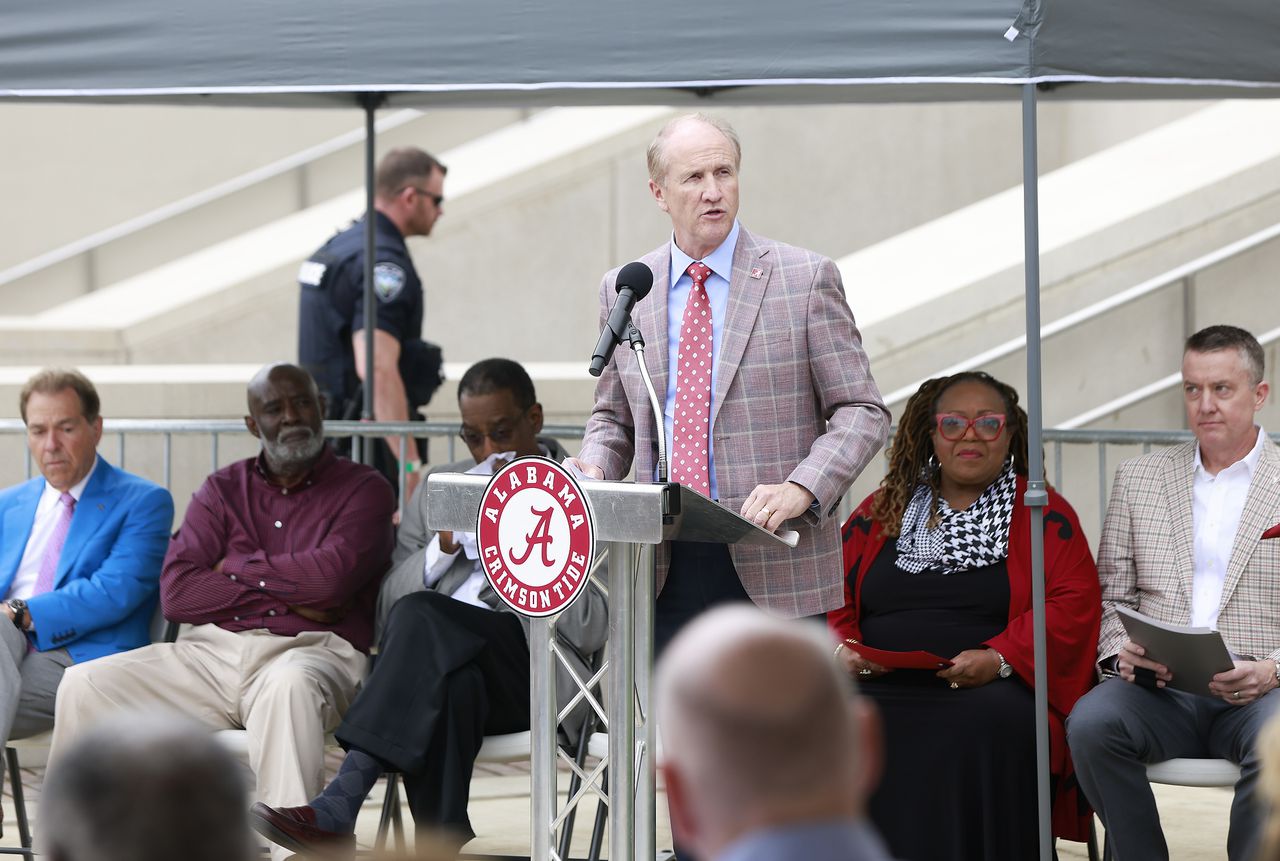
4/16/22 MFB A Day
Stuart Bell
Photo by University of Alabama AthleticsCrimson Tide Photos / UA Athletics
For now, universities in Alabama are highlighting the positives.
At the University of Alabama, the state’s flagship four-year public institution, in-state recruiting of students is on the upswing after years of enrollment increases from out-of-state students. The university, in a news release, touted its record-breaking enrollment of 39,623 students that includes 3,184 freshmen from Alabama, representing all 67 counties in the state. The ACHE preliminary data had UA’s enrollment at 39,646.
According to the University, it’s the fifth consecutive year with an in-state increase and the largest number of in-state freshmen since 2010. In-state tuition was frozen, once again, for the 2023-2024 academic year. Only once in the past five years – 2022-2023, to accommodate for inflation – has in-state tuition gone up at UA.
The university is also highlighting what it says is record enrollment of 9,342 ethnic and racial minority students, or 23% of the overall student body. The university says that is a 9.4% increase from 2022, and “likely includes the highest number of under-represented minority student enrollment at any university” in Alabama. It also includes an all-time high of 4,579 Black students (11.5%), and 2,610 Hispanics (6.6%).
“We’re proud of our enrollment numbers – for all the new students, but also for those we are helping to thrive here and persist through graduation,” UA President Stuart Bell said in a statement.
At USA in west Mobile, Bonner and other university officials are touting positives pulled out of their own enrollment data: More students are living on-campus, the freshman is one of the institution’s most academically talented with an average GPA of 3.76, transfer student and international student enrollments are up, and the Honors College freshman cohort is up 28% — the largest in university history.
USA is experiencing enrollment growth for the first time in six years halting a steady decline that began in 2016. The preliminary enrollment data from ACHE puts USA’s enrollment back to its 2020 level.
Bus trips and football
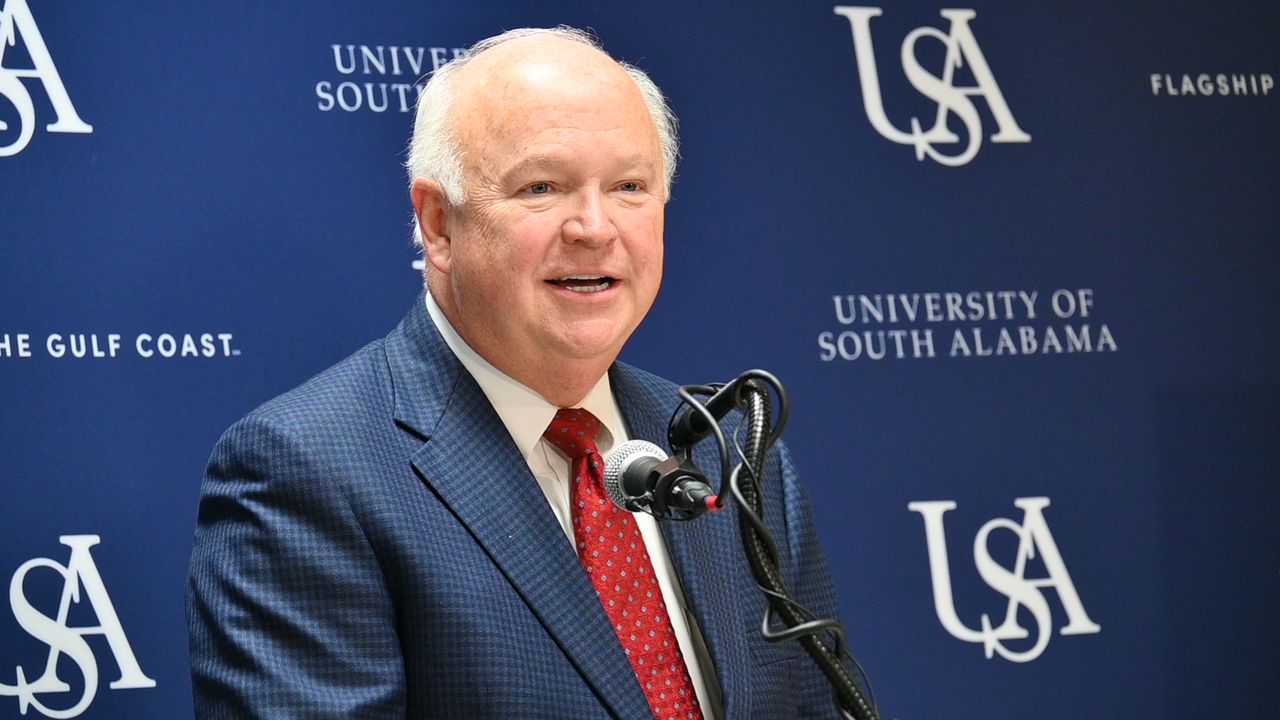
Jo Bonner, president of the University of South Alabama, speaks during a news conference on Wednesday, September 6, 2023, at the university’s administrative building in Mobile, Ala. (John Sharp/[email protected]).
Bonner and Andi Kent, executive president and provost, said there is no one factor for the boost, nor one thing to pin on its previous decline. Bonner said the pandemic and its impact, along with low unemployment in Alabama, created an environment where finding a job has been more enticing than college.
The University has aggressively focused on student recruitment in the last two years, expanding scholarships and its approaches to reaching new students and families.
Related content: A future ‘Jaguar Beach’? USA Foundation donates $1.9 million in beach property to university
Bonner said a series of VIP tours aboard Jaguar athletic buses – bringing prospective high school students to campus to visit with faculty and to tour facilities – has been a boon.
“Last year, Dr. Kent and I were personally on 30 buses,” Bonner said. “We’d leave campus at 6:30 or 7 in the morning, and it would be an 1-1/2-hour radius (drive) into Southwest Alabama and to the Mississippi Gulf Coast. We worked with high schools and let them identify 50 to 100 students who would be interested in visiting our campus. There are not many other universities that will pick up students and have them come to our campus and spend a day in the life of a college student.”
Part of the focus is luring students within the Gulf Coast, as USA pushes a branding campaign calling itself “Flagship of the Gulf Coast.”
Kent said that USA officials are focused on growing enrollment within Mobile and Baldwin counties. A new dual enrollment program called “Start South,” is attracting high school seniors into USA as freshmen. She said that 76% of seniors participating in Start South last year are now freshmen on campus.
“Our program is different than the traditional dual enrollments with community colleges in that our faculty teach the classes,” Kent said. “Instead of high school teachers, our faculty is teaching classes to the high school students, and it’s a way we are helping set it apart. It also helps the high schools (dealing with) teacher shortages.”
Bonner also gives a nod to an attractive on-campus experience. Having a new football stadium within walking distance of the dorms doesn’t hurt either, he said.
“You can’t put a dollar amount on it,” said Bonner, referring to Hancock-Whitney Stadium, home to the football Jaguars that opened in 2020. “Our students say they look forward to getting up in the morning, and five minutes later, they are in the newest on-campus stadium in the state of Alabama. It helps to create that total campus feel that a lot of young people are looking for.”
In Birmingham, Protective Stadium is the new home to the UAB Blazers. It is not on campus but does add an attraction to students who have helped increase UAB’s enrollment by 21.2% since 2013.
“There is a new conference, a new field and a new coach,” said Benoit, the school’s provost. “The coach is very much engaged with the students.”
Decade of growth
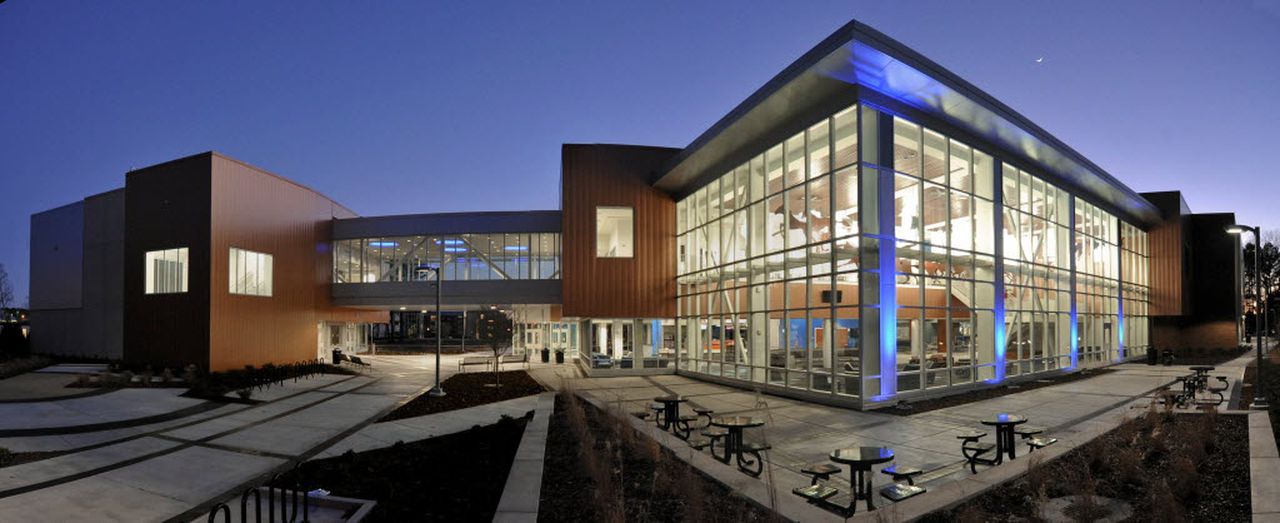
Charger Union student center on the campus of University of Alabama in Huntsville.
UAB and the University of Alabama at Huntsville (UAH) both experienced one-year dips in enrollment. UAH’s decline was about 5%, according to preliminary ACHE data. But over the past decade, the university’s enrollment has risen close to 19%.
Elizabeth Gibisch, assistant vice president for communications, content and operations at UAH, said that compared to last fall, notable growth of more than 5% occurred for programs in all six of the institution’s academic colleges – Arts, Humanities & Social Sciences, Business, Education, Engineering, Nursing, and Science.
The number of degrees awarded also increased by more than 40% within the last decade with nearly 75% of graduates remaining and working in Alabama after graduating.
“However, the University does recognize that there has been a decrease in enrollment as of late and we are attributing that to COVID-related attrition and other student choices,” Gibisch said.
Benoit said that at UAB, the school is putting together new “innovative programs students are interested in,” such as a new cancer biology program for undergraduates. While UAB saw a one-year enrollment drop of 1.9%, the institution’s 10-year figures are strong at 21.2%.
“What do students need, what are they interested in and what is the job market for different kinds of programs,” Benoit said. “UAB, as a whole, has seen growth in multiple areas and people are recognizing that it’s a quality institution that has particular fields that are highly ranked.”
Dips and increases
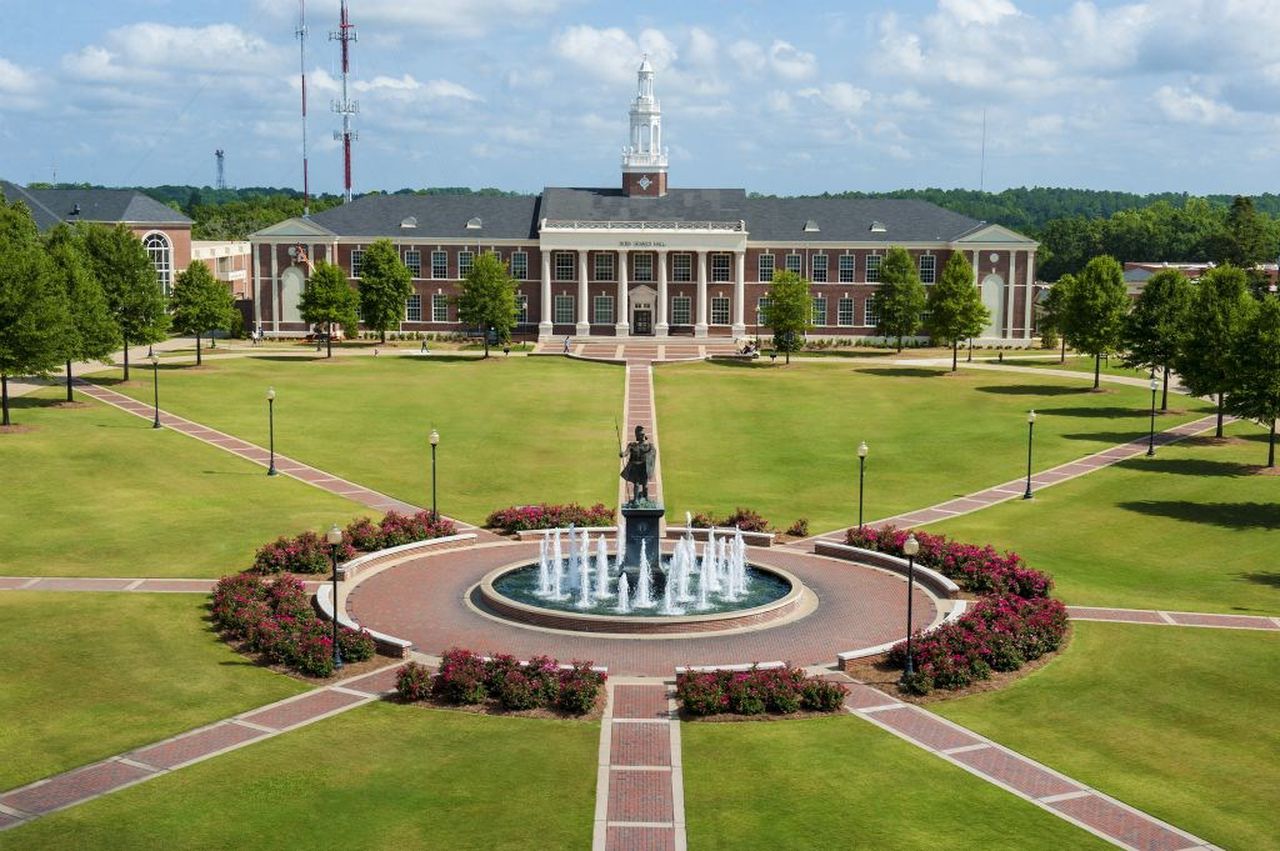
Troy University
Troy University is the only four-year public institution in Alabama to have experienced a dip in enrollment between 2022-2023, as well as a corresponding enrollment decline over the past decade.
Matt Clower, spokesman at the university, said the ACHE preliminary enrollment figures do not include Troy’s out-of-state students. He said that includes Troy’s support centers around the U.S., and international teaching sites.
He said that as of September 12, Troy’s enrollment should be 13,227 (as opposed to ACHE’s preliminary figure of 12,416), which would be down only 0.35% from the fall 2022.
Clower said that Troy’s leaders continue to be “engaged in an ongoing process of strategic planning” that includes marketing, program inventory and support services to ensure the university is able to recruit and retain students.
He said plans are underway to introduce a doctoral degree in criminology and Business Administration. He said interest is also coming from international markets, particularly Vietnam.
“We are encouraged by this fall’s growth in online enrollment, particularly among graduate students,” Clower said. “We are grateful to ACHE for their recent approval of an instructional role change that will allow Troy to expand our inventory of doctoral programs.”
The largest single-year enrollment boost came from the University of Montevallo. The small four-year institution south of Birmingham added 362 students between 2022-2023, enough for a 13.8% increase. At a total enrollment of 2,980 students, the university will be at its highest mark since 2016. The one-year increase also bucks a trend of enrollment declines at the small university that have occurred for the past decade.
Courtney Bentley, Montevallo’s provost and vice president of academic affairs, credits a new dual enrollment partnership with Shelby County schools for the enrollment boost.
“This partnership will help these students see the potential and possibility of being successful in upper division dual enrollment courses,” Bentley said. “We really felt like it was an opportunity for those students to be introduced to a higher education environment.”
